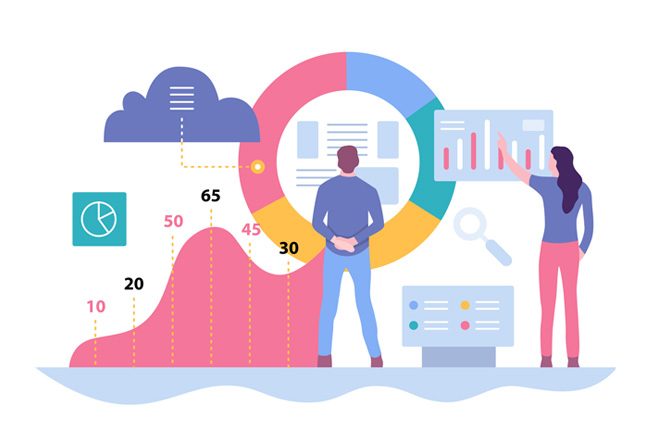COVID-19 has in many ways irrevocably changed the way we work. Almost overnight, organisations were forced to establish a new remote workforce. Kitchen tables became desks, and in-person meetings were replaced by video calls. Now, more than a year later, most organisations accept that remote working is here to stay in some form. In fact, according to a Gartner survey in 2020, 82 percent of companies said say they intend to allow employees to work remotely some of the time going forward. Human Resources (HR) departments have been given the enormous task of supporting this new way of working. Here we look at the key challenges that HR teams have faced during the pandemic and at the technologies and services that have underpinned the shift to remote working.
BIGGEST WORK SHIFT IN A GENERATION
Microsoft CEO Satya Nadella, recently said that “hybrid work represents the biggest shift to how we work in our generation.” He cited Microsoft research that says 73 percent of workers want flexible remote work options to continue, while more than 65 percent are craving more in-person time with their teams. To prepare, 66 percent of business decision makers are considering redesigning physical spaces to better accommodate hybrid work environments.
Some large employers, such as JP Morgan, have said they intend to bring most employees back to the office soon. While others – most notably the big tech firms like Amazon, Facebook and PwC at a UK level – are envisioning a world of hybrid working. As such, they have opted for a much slower return to the office with far greater flexibility for employees to choose when and how they work.
Prasun Shah, partner, human sciences and future of work technology leader at PwC UK, says it has been easier for tech firms to pivot to ‘the new normal’ than others with more traditional operating models. They were already using technology to enable a hybrid operating model that included remote working, collaboration at scale, and the use of location-agnostic talent.
“Whilst the initial focus has been on the operating model and location choices, increasingly we are seeing technology organisations take the lead on employee wellbeing and the creation of a preference-based model,” he said.
We are seeing technology organisations take the lead on employee wellbeing and the creation of a preference-based model” – Prasun Shah, PwC Uk
Indeed, organisations now need to adapt employee-led ways of working. According to recent research from Topia, a software vendor that specialises in managing mobile workforces, 91 percent of employees now say they should be able to work from anywhere so long as their work gets done. The ability to work remotely is now also the second-highest-rated feature that attracts employees to a company, behind only high pay.
“COVID has created a big shift in how work gets done and organisations are now forced to adapt to this shift – either embrace it or risk potential consequences, such as employee attrition,” says Steve Black, co-founder and chief strategy officer at Topia.
Organisations are now forced to adapt to this shift – either embrace it or risk potential consequences, such as employee attrition” – Steve Black, Topia
CHALLENGES FOR HR
Nevertheless, these seismic changes to the way we work have seen HR venture into unchartered territory in some cases. Certainly, they are facing some significant challenges when it comes to supporting employees in the new working environment. Jasmin Mantel, HR director at SAP UK says the company has tried to enable and support everyone with their individual situations, while paying close attention to life balance and mental wellbeing.
“We have encouraged open dialogue between people leaders and employees at all levels, offering flexibility around people’s working patterns to help them manage their personal situations,” she says.
Mantel says ongoing communication is imperative in understanding what support our employees need, when they need it and how it should be delivered.
“Throughout the pandemic, we have focussed on understanding how all our employees are feeling through regular employee surveys to gauge sentiment, check-ins and monthly all-company update calls with the leadership team. This has helped us quickly unearth any concerns and enabled us to communicate and make decisions that are empathetic to everyone’s personal circumstances.”
RECRUITMENT
Another area where HR has been forced to adapt to new processes is hiring and onboarding new employees.
“Recruitment has changed massively in the last year. With the introduction of video interviews, the time to hire has dropped considerably, and in a period when businesses are in desperate need of the skills to help them bounce back, I think they could remain a feature of the hiring landscape,” says Zoë Morris, president at IT recruitment firm, Frank Recruitment Group.
“That means the way you recruit needs to be smarter. Your preference may be to interview someone in person, but they’re likely to be much more in demand now and waiting until they’re available to come to you could mean missing out on the best candidate.”
However, Morris says this is only half the battle. “Once you get quality professionals through your door, you need to focus on what makes them stay. In a post-pandemic world where the footfall into city centres may not be as great as it once was, that goes way beyond the perks you can offer such as on-site food or discounts on gyms or car parking,” she explains.
Frank Recruitment itself has 1,800 employees, and Morris said, like SAP, the issue that quickly came to the forefront and has remained front and centre throughout the last year, is employee wellbeing.
“At first, it was a case of supporting staff at what was a worrying time for a lot of people on a very personal level. Different restrictions came in that affected people’s lives in a number of ways and it was important for us to be as empathetic to individual circumstances that came up.
Once you get quality professionals through your door, you need to focus on what makes them stay” – Zoë Morris, Frank Recruitment Group
“Those situations also forced employees to take a step back and re-evaluate what was most important to them. For many, the extra time spent at home and the flexibility it allows to achieve a better work-life balance was precious. Moving forward, we want to continue this and have introduced a number of initiatives to ensure our staff are happy and engaged,” she says.
LESSON LEARNED
So, are there any lessons learned by HR teams that can be carried over, beyond the extent of lockdown, to deliver a better way for employees to feel valued and productive?
Mantel believes that whether employees are working remotely on site, or a combination of both, delivering experiences that keep them engaged is critically important.
“A hybrid workplace model challenges HR teams to not only keep people connected, engaged, empowered and healthy, but also analyse data-driven insights to understand and improve the workforce culture, to deliver business outcomes and employee experiences that matter,” she says.
“With the hybrid work model here to stay, it is increasingly important that employees feel connected, informed and with access to the tools and resources they need to be productive from any device or location.”
Mantel believes there are several key lessons HR has learned that should be applied well beyond the pandemic. Human connection and empathy are more important than ever, she says. Fostering a caring culture in which people can stay healthy and balanced is important to make employees feel valued and helps drive business success.
With the hybrid work model here to stay, it is increasingly important employees feel connected” – Jasmin Mantel, SAP
Continuous learning is essential to help people acquire new skills, understand constantly changing regulations and be agile to adapt to the changing environment. In addition, learning new things and skills keeps you motivated. Post pandemic learning will continue to be a critical strategy to help employees reskill and upskill and for organisations to retain talent but also to strive and be successful.
And of course, technology has a huge impact on employee experience. People need intuitive technology that allows them to easily find what they need, be productive and collaborate with others.
NO ‘ONE-SIZE-FITS-ALL’ APPROACH
However, in terms of big moves that support and enable the transition to remote working and a distributed workforce, there appears to be a clear realisation that this is not a one-size-fits-all approach. “Choices and individual preferences will play a key role,” says Shah, especially in relation to tech firms. These, he says, have been used to a culture of employee activism and citizen-led design.
“This will turn into a competitive advantage as the use of data and behavioural science can play a key role in helping design this hybrid work paradox by taking an outside-in lens. Digitisation, big data, the use of behavioural science, and a culture of rapid experimentation (fail fast) are all critical to designing for a distributed workforce, and technology organisations are really well placed to drive this.” This is evidently the case with PwC, with the firm recently announcing organisation-wide changes to allow greater flexibility for post-pandemic working for its 22,000 employees.
More companies are likely to follow PwC’s lead. McKinsey notes that more than 20 percent of the workforce could
work remotely three to five days a week as effectively as they could if working from an office. If remote work took hold at that level, that would mean three to four times as many people working from home than before the pandemic.
This means HR will need to adapt to these changes, embracing technology, and ensure that employees are still best placed to do their jobs – regardless of their location or circumstances – in the new hybrid world of work.




